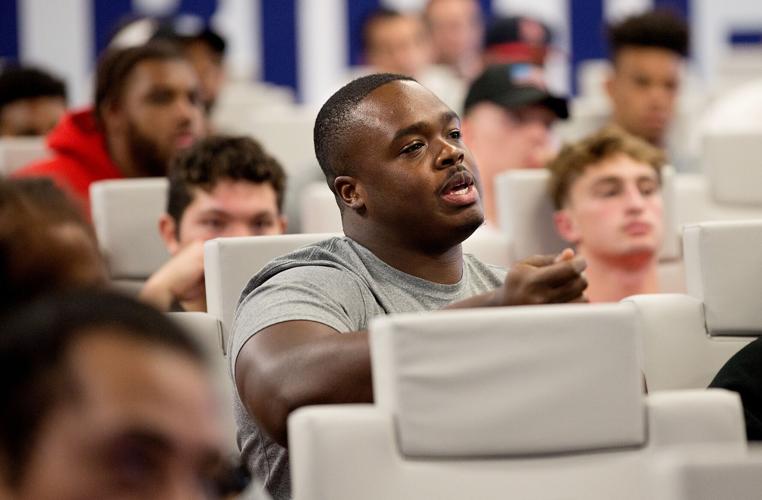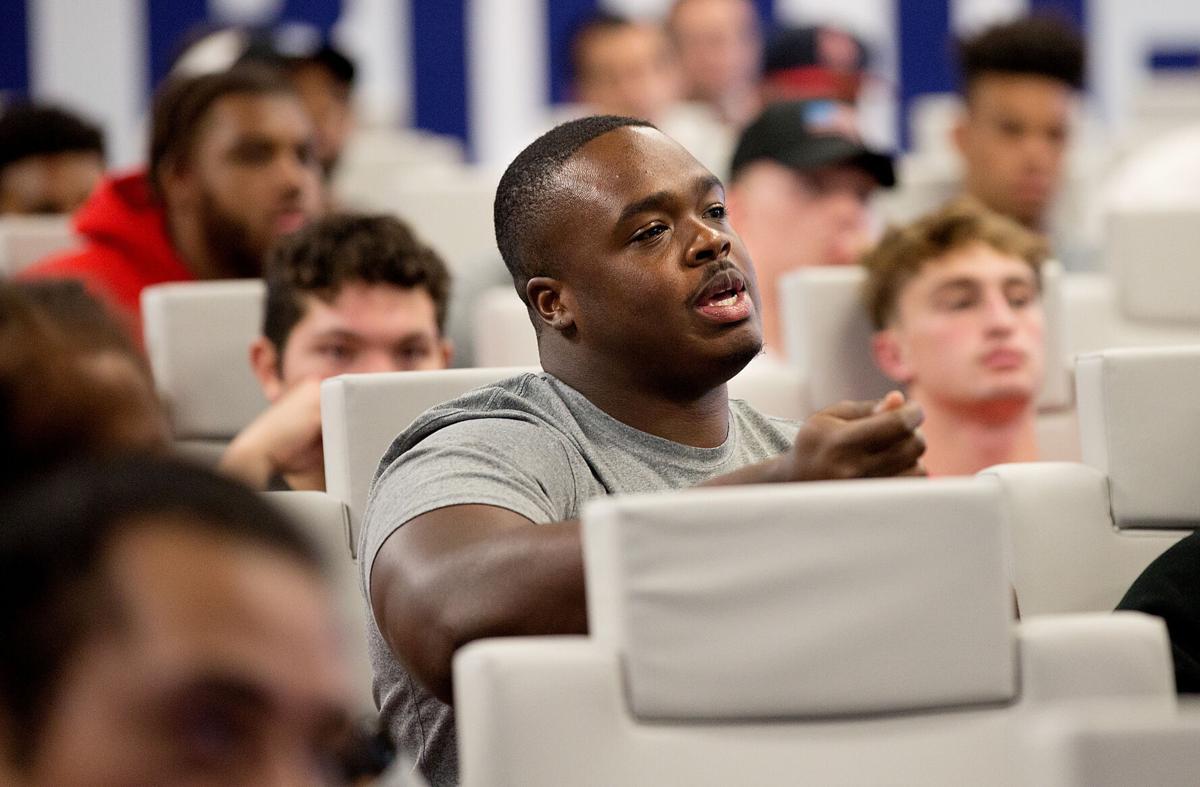JB Brown ambled towards the exits at the Cole and Jeannie Davis Indoor Sports Center after talking with media in the weeks leading up to the Arizona Wildcats’ season opener against BYU on Sept. 4 in Las Vegas.
When the UA defensive lineman was complimented on his diamond-studded watch cuddling his wrist, teammate Christian Young chirped that “NIL has been treating him good.”
No, Brown’s watch isn’t a product of the name, image and likeness phenomenon that allows college athletes to receive compensation for endorsements.
And a program like Arizona’s doesn’t compare to, say, Alabama, when it comes to NIL money. Crimson Tide freshman quarterback Bryce Young has reportedly already earned more than $800,000 in endorsements. And ’Bama defensive back Kool-Aid McKinstry has capitalized on the “N“ in NIL by partnering with the popular drink.
Even players on the UA men’s basketball team have reached agreements with companies. Wildcats guard Dalen Terry recently became a Lolo’s Chicken and Waffles ambassador.
But Tucsonan Stanley Berryhill III doesn’t yet have his own flavor at Eegees, running back Stevie Rocker isn’t promoting a gravel company, and offensive lineman Jordan Morgan isn’t sponsored by Raising Cane’s — even though he credits the chicken joint for the weight he’s gained since entering college.
Terry, the basketball player, has just over 98,000 followers on Instagram, which is more than the UA football team account, Berryhill, Morgan and Rocker combined, with about 30,000 to spare.
Overall, “it’s a slower process, but it’s great for the student-athletes to begin asking questions,” said Erika Barnes, UA’s senior associate director of athletics.
Arizona athletic director Dave Heeke reiterated that there’s “not as many (deals) as you would assume right away.”
“I think a lot of people are trying to find their way through what this is, how do you do it and how do you partner up?” Heeke said.
For now, student-athletes can educate themselves on NIL with “Arizona Edge,” a program dedicated to networking, financial literacy, brand management and business development, in coalition with Arizona’s Eller College of Management, James Rogers College of Law and the UA compliance office.
“There’s an educational process and a series of steps they need to take, so we know what’s happening,” Heeke said.
After extensive training and courses, student-athletes will receive badges of certification to send to companies inquiring about endorsements and partnerships. The UA is also in the process of installing TV and podcast studios in the Lowell-Stevens Football Facility to provide players media platforms, if they choose that path.
UA wide receiver Jamarye Joiner, who is expected to miss the season opener and maybe the nonconference schedule due to recovery from a foot injury, has been marketing himself on social media since the summer.

Arizona wide receiver Jamarye Joiner is creating his own fashion line with a butterfly as a logo."My whole life has been adversity, so I’ve been in a cocoon my whole life," he said."Now it’s time for me to break that wall down and fly."
Joiner sells T-shirts and hoodies with Get It In apparel company. Joiner is also beginning his own line; Loyalty the Brand has a butterfly logo.
Why a butterfly?
“A butterfly commits to its process,” Joiner said. “A caterpillar commits to its process and goes into a cocoon for around 14 or 16 days, and it’s committing to its process — it doesn’t know what’s happening or what’s happening to the body, but it’s committing.”
Joiner has been in a cocoon of sorts between rehab and physical therapy. And he’s hoping to spread his wings — on and off the field — when he returns from injury and becomes an integral part of the Wildcats’ offense.
“When a caterpillar comes out of its cocoon, it’s a butterfly, and it’s able to flap its wings and break barriers, overcome adversity and come out as a butterfly and fly,” he said. “My whole life has been adversity, so I’ve been in a cocoon my whole life. Now it’s time for me to break that wall down and fly.”
UA first-year coach Jedd Fisch is an advocate for NIL’s potential economic boom in college sports, but he knows what hurdles remain.
Before they can cash in, the Wildcats need to win.
“When that occurs, they’ll have more opportunities as we continue to educate them through the (Arizona) Edge program, and then market them through our own upstairs,“ Fisch said.
Maybe then, the Stanley Red and Blue Berryhill Eegee will be a thing.
“The first thing I told my team is that, ‘You better win or no one will care,’” Fisch said.
“The second thing: ‘You better be good as a player or no one’s going to pay you.’”
Lute Olson was head basketball coach at the University of Arizona from 1983-2008. He was a seven-time Pac-10 Coach of the Year, made five Final Four appearances, won the 1997 NCAA Championship and was inducted into the Basketball Hall of Fame in 2002. He died Aug. 27, 2020.






